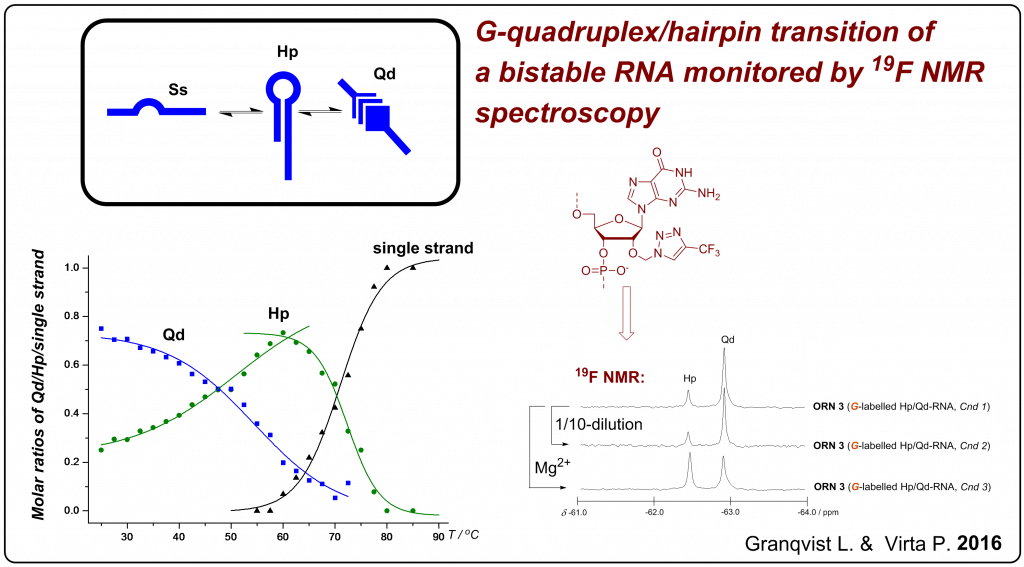Non-canonically folded structures are usual in RNA and their role to regulate gene expression is essential. These include bulges and loops, but also higher order secondary structures, including Hoogsteen hydrogen bonded triple helices and G-quadruplexes (Qds). Due to the dynamic equilibriums and aggregation, the characterization of these RNA structures and determination of the molar fractions of the conformers upon the conformational transition is extremely complex. The better characterization is a hot subject, which may increase the mechanistic understanding of the pathologic role of these RNA regions.
We have invested remarkable effort on developing improved 19F NMR-based detection methods for the structure, dynamics and molecular interactions in oligonucleotides (Funded by the Academy of Finland). Compared to conventional spectrophotometric methods (UV and CD-based), the superiority of 19F NMR may become distinct with more detailed information about the structure and molar ratios of secondary structural species. In the ongoing work, our focus is on the monitoring of conformational transitions of bistable Qd/Hp-RNAs, on the thermodynamics of the transitions and how these transitions may be affected by small molecular ligands.
 Related Publications
Related Publications
- Granqvist, L. & Virta, P. Chem Eur J. 2016, 17, 15360-15372.
- Granqvist, L. & Virta, P. J. Org. Chem. 2015, 80, 7961.
- Tähtinen, V., Granqvist, L. & Virta, P. Bioorg. Med. Chem. 2015, 23, 4472
- Granqvist, L. & Virta, P. J. Org. Chem. 2014, 79, 3529
- Kiviniemi, A., Murtola, M., Ingman, P., Virta, P. J. Org. Chem. 2013, 78, 5153
- Kiviniemi, A. & Virta, P. Bioconjugate Chem. 2011, 22, 159.
- Kiviniemi, A. & Virta, P. J. Am. Chem. Soc. 2010, 132, 8560.
